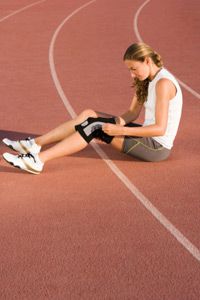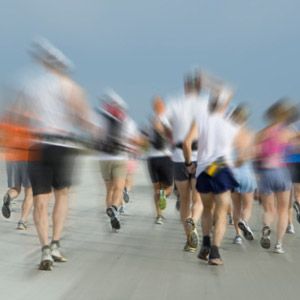The recent influx of super gyms, high-tech treadmills and yearlong marathons reveals an expanding segment of society that lives to run. Whether runners squeeze in a jog outdoors before work or rack up several miles at a whim, running is no longer an adaptation for survival; it's an activity of health, leisure and well-being. The health effects of running and exercise in general are long-lasting, and they're becoming more public with research and media coverage. But what about the drawbacks?
This form of exercise isn't always a walk -- or run -- in the park. Running injuries hinder veteran runners as well as beginners. Most injuries occur around the foot, ankle, lower leg, knee and hip areas. Though there's overlap in treating these ailments, getting back on the track depends on many factors, including the severity of the injury, age, nutrition, biomechanics and the strength of muscles in other areas of the body.
Advertisement
Even considering these factors, all running injuries have one thing in common: pain or some level of discomfort. The prevailing phrase "No pain, no gain" should not be taken literally while exercising. Physical activity often requires you to push your body to its limits -- but not to the point of pain. Your body is adept at signaling when something is wrong, and pain is its language.
So what causes running injuries? Usually, training errors are the top contenders. One estimate states that 60 percent of running injuries are caused by training errors, and some researchers say the percentage is even higher [source: Hreljac]. As one podiatrist notes, people suffer from the "terrible toos … too much, too soon, too often, too fast and too little attention paid to pain" [source: Pribut]. Poor nutrition, incorrect form, lack of stretching and improper footwear can also increase your chances of injury. Fortunately, health experts and researchers are well-equipped to effectively treat these injuries as they arise.
In this article, we'll explore how health care professionals treat running injuries and learn about how to prevent injuries from occurring in the first place. Moving forward, keep in mind that running injuries often stem from problems in your training, biomechanics or anatomy. In the long term, contacting a doctor to find the underlying cause is just as important as receiving treatment.
Let's start by reviewing the process of icing and heating.
Advertisement


